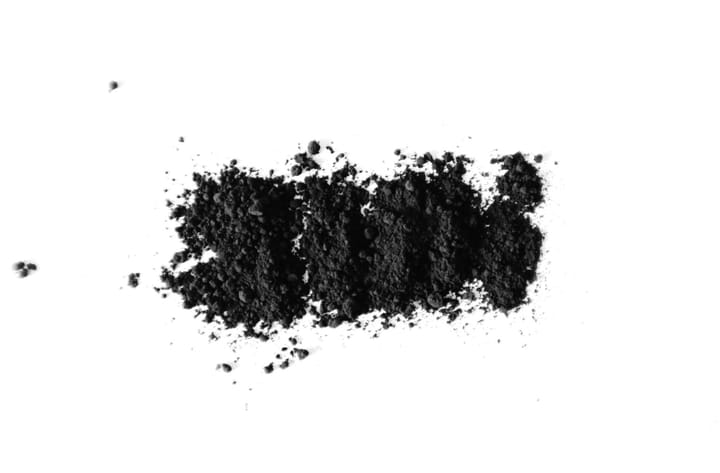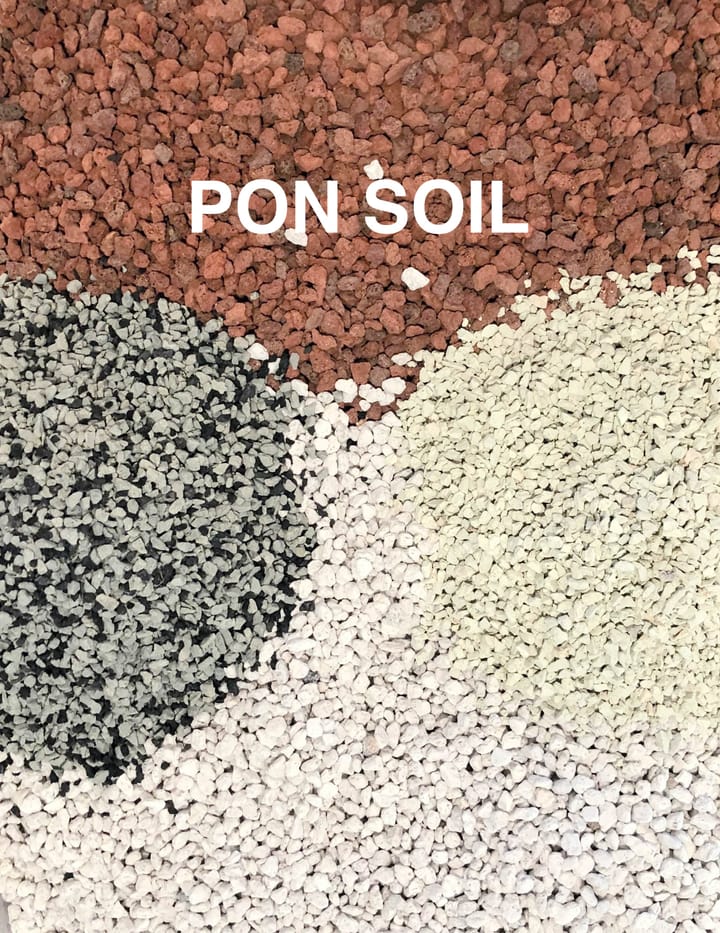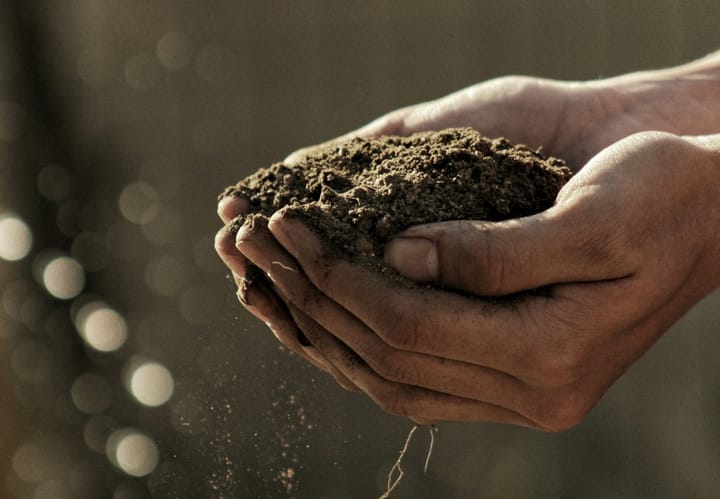How and When to Fertilize Your Vegetable Garden
Creating a thriving vegetable garden involves more than just planting and watering.

The successful growth of your plants is significantly influenced by proper fertilization, which ensures they receive the essential nutrients needed to grow healthy and produce bountiful harvests.
Understanding soil nutrient basics and choosing the right fertilizer for your garden can make a substantial difference.
Before fertilizing, it’s important to assess the nutrient levels in your garden soil. This will guide you in selecting a fertilizer with an appropriate nutrient ratio.
Fertilizing is not a one-size-fits-all approach; it requires careful application and timing to meet the specific needs of your vegetables.
Different types of vegetables have distinct nutrient needs throughout their growth stages.
For instance, leafy greens may require more nitrogen, while root vegetables benefit from phosphorus for root development.
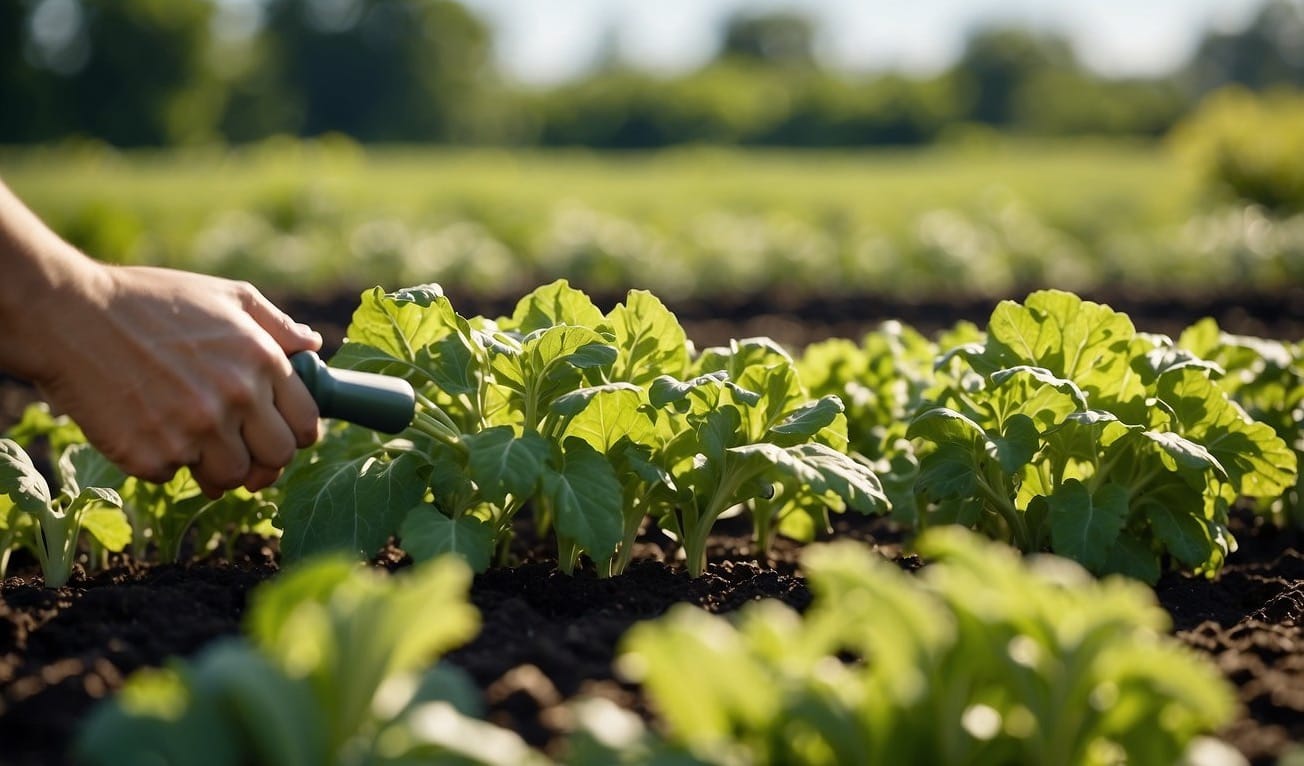
Moreover, the timing of fertilizer application is crucial—adding fertilizer too early or too late can adversely affect plant growth and yields.
The method of application is important as well. Even distribution and appropriate dilution are key to preventing over-concentration that could harm your plants.
Key Takeaways
- Proper fertilization is crucial for the health and productivity of your vegetable garden.
- Soil testing and correct fertilizer selection are necessary for tailored plant nutrition.
- Fertilization should be timed and applied correctly to support different vegetable needs.
Understanding Soil and Nutrient Basics
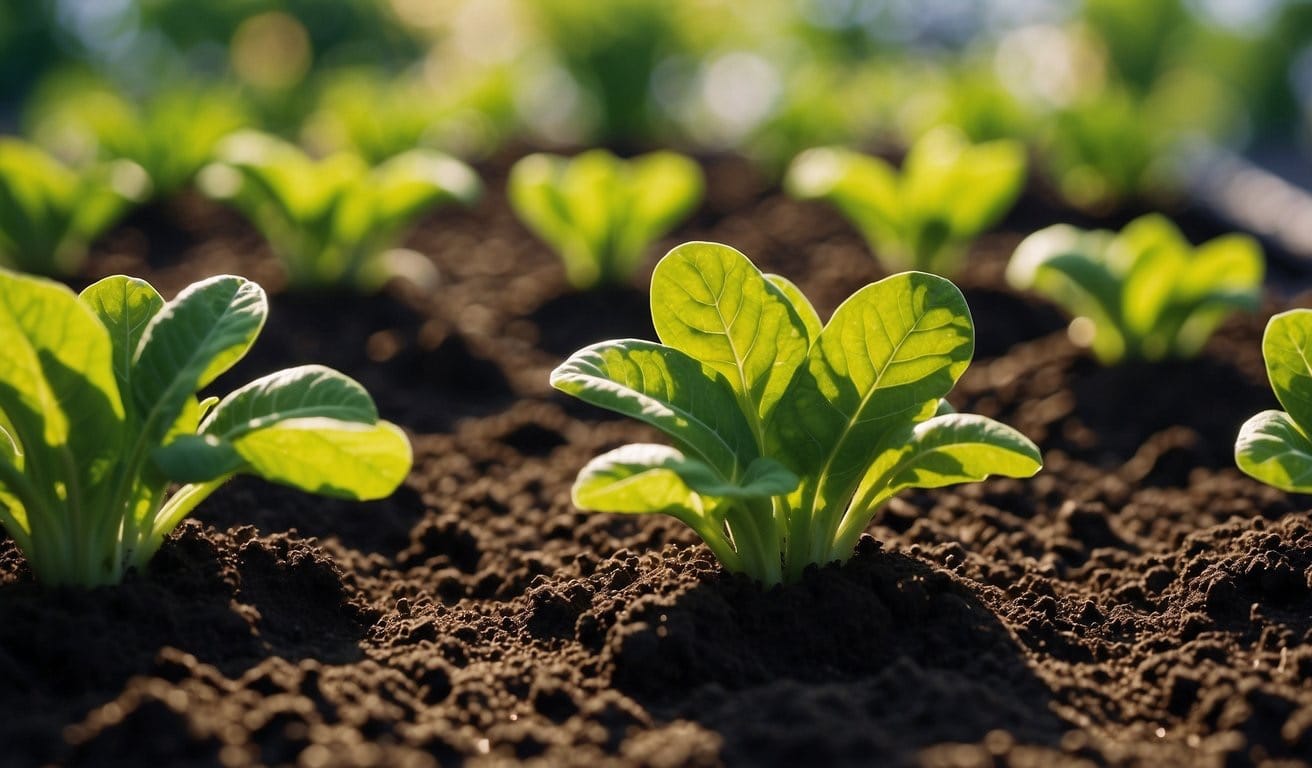
Before fertilizing your vegetable garden, it's crucial to understand your soil's current status and the specific nutrient needs of your plants.
The right balance can promote healthy growth and abundant yields.
Soil Testing for pH and Nutrients
Performing a soil test is the first step in assessing the fertility of your garden. A soil test will reveal the pH level and existing concentrations of nutrients such as nitrogen, phosphorus, and potassium (NPK), as well as micronutrients.
Soil pH plays a critical role in how well plants can absorb the nutrients that are available to them.
Ideally, your soil test should also examine soil texture, which determines water retention and aeration capabilities.
The Role of NPK in Plant Nutrition
Each nutrient in the NPK ratio has a specific role:
- Nitrogen (N) is essential for leaf growth and chlorophyll production.
- Phosphorus (P) supports the development of roots and flowers.
- Potassium (K) aids in overall plant health and disease resistance.
Your fertilizer choice should reflect the NPK requirements of your vegetables. For instance, leafy greens favor a higher nitrogen ratio, whereas root crops may benefit more from phosphorus.
Organic Matter and Soil Structure
Adding organic matter to your soil improves its structure and enhances nutrient availability.
Materials like compost or decomposed leaves introduce beneficial microorganisms and can help bind sandy soils or loosen clay soils.
This amendment ensures your plants have a hospitable environment for root growth and access to necessary nutrients.
Remember, healthy soil with a stable structure is paramount in creating a productive vegetable garden.
Choosing the Right Fertilizer
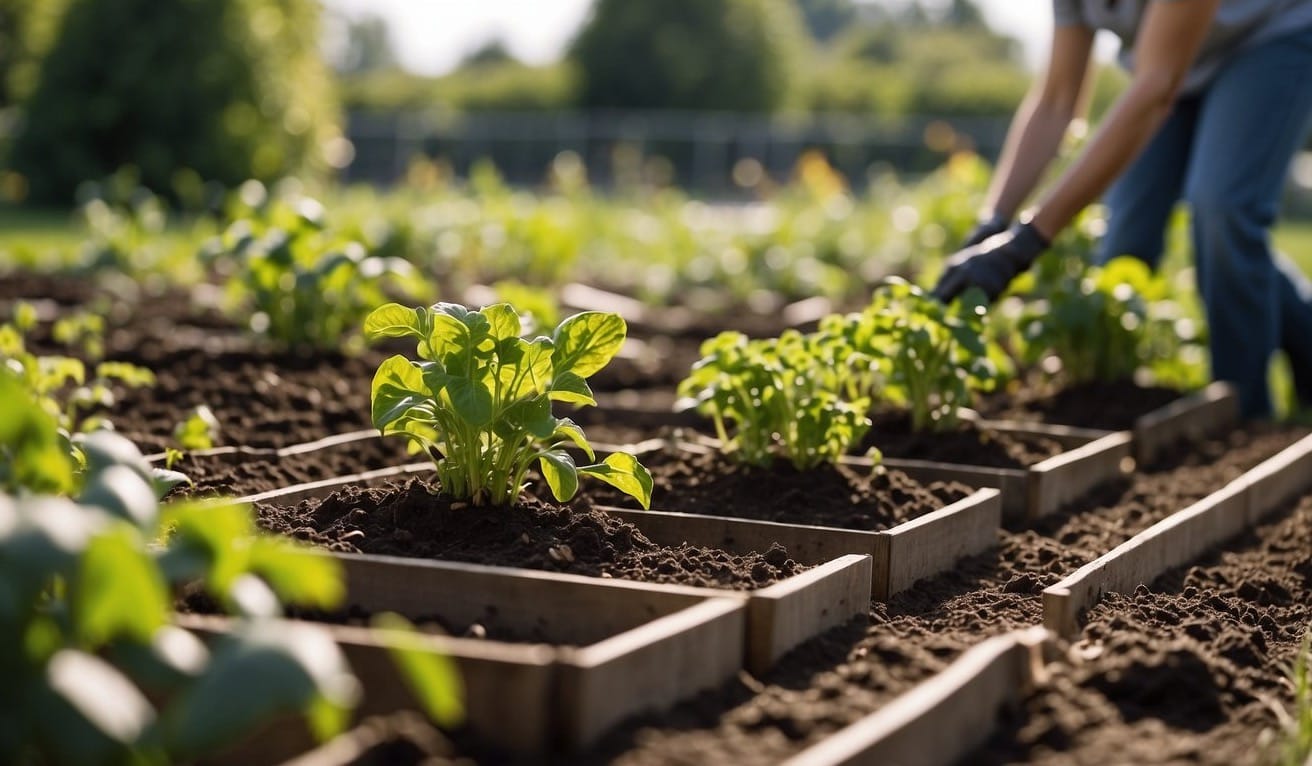
Selecting the appropriate fertilizer for your vegetable garden hinges on understanding the differences between organic and inorganic options, effectively interpreting fertilizer labels, and recognizing the specialized fertilizers tailored for vegetables.
Organic vs. Inorganic Fertilizers
Organic fertilizers are derived from natural sources such as compost, manure, and bone meal. These fertilizers gradually release nutrients, improving soil structure and microbial activity.
In contrast, inorganic fertilizers or synthetic fertilizers provide nutrients rapidly but do not offer long-term soil health benefits.
Your choice depends on your garden's immediate nutrient needs and your commitment to sustainable practices.
Reading Fertilizer Labels
Every fertilizer label carries an N-P-K ratio, indicating the percentages of nitrogen (N), phosphorus (P), and potassium (K), respectively. For example:
- 10-10-10: This is a balanced fertilizer suitable for general use.
- 5-10-10: A mix with a higher phosphorus content, which promotes root development.
Read these labels carefully to select a fertilizer with the nutrient balance that your vegetable garden needs based on soil tests.
Specialized Fertilizers for Vegetable Gardens
Vegetable-specific fertilizers are formulated to meet the particular nutrient requirements of vegetable plants. These may come in different forms:
- Granular: Slow-release and typically applied at planting time.
- Liquid: Fast-acting, often used for a quick nutrient boost.
Choosing a specialized vegetable fertilizer can ensure that your plants receive the proper nutrients at the right stages of their growth cycle.
Fertilizing Techniques
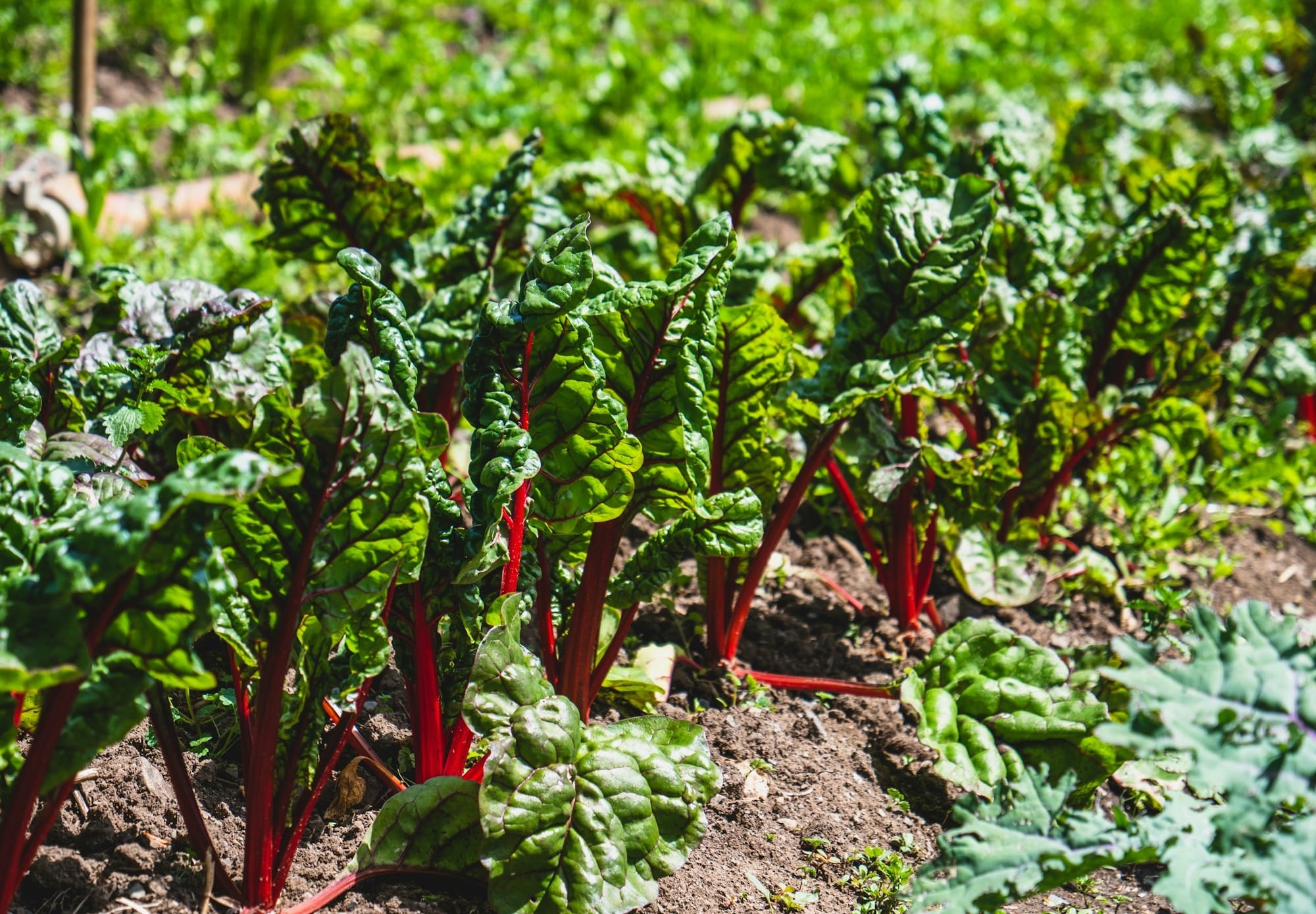
Proper fertilization techniques are essential for the health and productivity of your vegetable garden. Understanding the differences between methods and types of fertilizers can significantly enhance your garden's performance.
Broadcasting vs. Side-Dressing
Broadcasting is a fertilization method where you evenly distribute fertilizer over the entire soil surface.
This technique is generally performed before planting and is ideal for addressing soil deficiencies prior to establishing your garden.
Contrastingly, Side-Dressing is applied to the soil beside the plants, providing a targeted nutrient boost. This is especially beneficial for feeding growing plants that have high nutrient needs midway through the season.
Top-Dressing and Foliar Feeding
Top-Dressing is the application of fertilizer directly on the soil's surface around the plants. This technique is often used with slow-release formulas, which gradually deliver nutrients over time, supporting sustainable plant growth.
On the other hand, Foliar Feeding involves spraying liquefied fertilizer directly onto the leaves, allowing plants to absorb nutrients through their foliage. This method can lead to quick nutrient uptake when plants show signs of deficiencies.
Liquid vs. Granular Fertilizers
Fertilizers come in two main forms: liquid and granular.
Liquid fertilizers are fast-acting, immediately supplying nutrients to the plants. They can be used for both foliar feeding and soil applications.
Be cautious to follow the recommended dilution rates to prevent over-concentration that can harm plant tissues.
Granular fertilizers, in contrast, are typically slow-release and provide a steady supply of nutrients over a longer period.
Incorporate granular fertilizer into the soil or distribute it on the surface for a prolonged feeding effect. Choosing the appropriate type depends on your plants' immediate and long-term nutritional needs.
Timing Your Fertilization
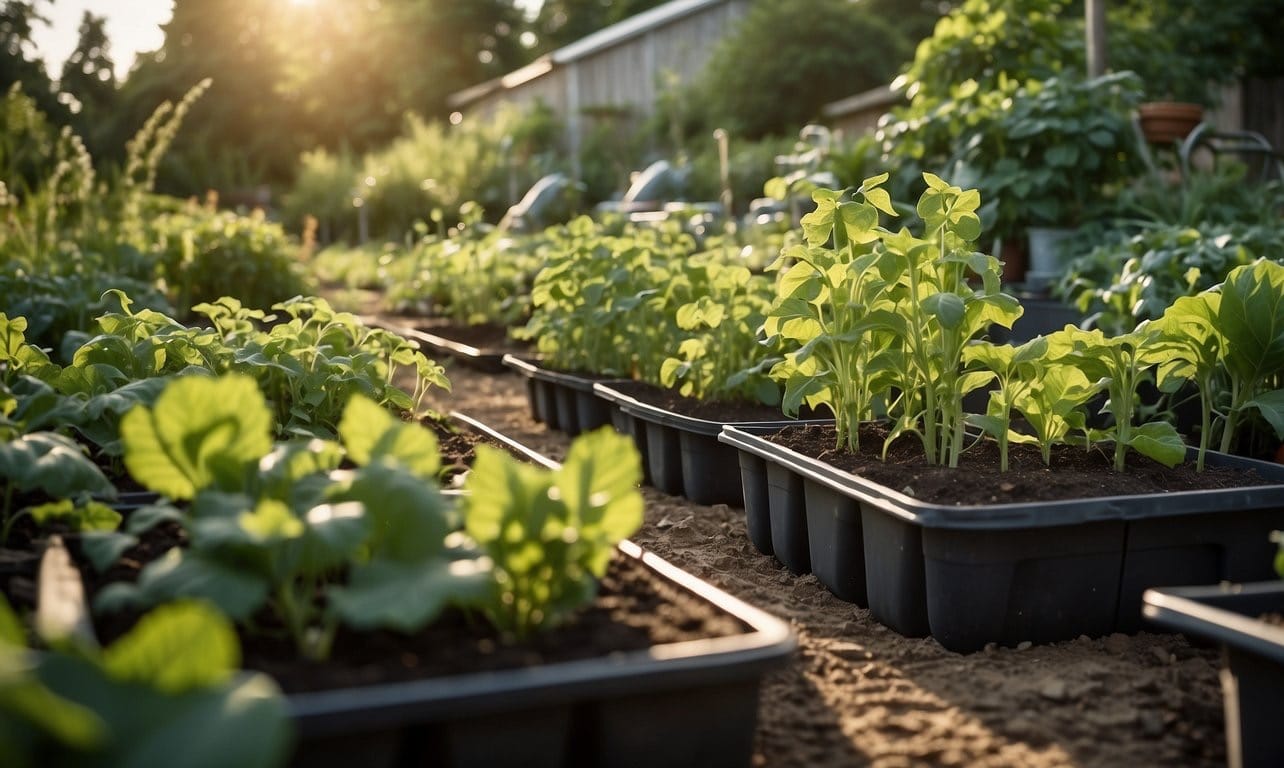
Proper fertilization timing is crucial for a bountiful garden. Knowing when to apply fertilizer is as important as selecting the right type because it aligns with the growth stages of your plants.
Fertilizing in Spring
Spring marks the beginning of the growing season. At this time, the soil is waking up from winter dormancy, and your plants are ready for a boost.
Apply a balanced fertilizer, such as a 3-4-4 NPK (Nitrogen-Phosphorus-Potassium), to your vegetable garden before planting. This gives your seedlings the initial nutrients they need.
The best time of day for fertilizing is early morning, so nutrients can be absorbed efficiently throughout the day.
Summer Fertilizing Schedule
As summer progresses and temperatures rise, your vegetables will be in active growth and may need additional nutrients.
A fertilizer with a 3-4-6 NPK ratio is excellent, particularly for fruiting plants like tomatoes, which need more potassium.
Schedule a light fertilizing every three to four weeks to maintain nutrient levels. Always water your plants after fertilizing to help the soil absorb the nutrients.
Preparing for Fall and Winter
Towards the end of the growing season, prepare your garden for fall and winter.
This isn’t the prime time for heavy fertilization, but you can help perennial vegetables by applying a phosphorus-rich fertilizer to aid root development.
Do this about six to eight weeks before the first expected frost to ensure your plants make the most of the fertilizer before they enter dormancy.
Feeding Different Types of Vegetables
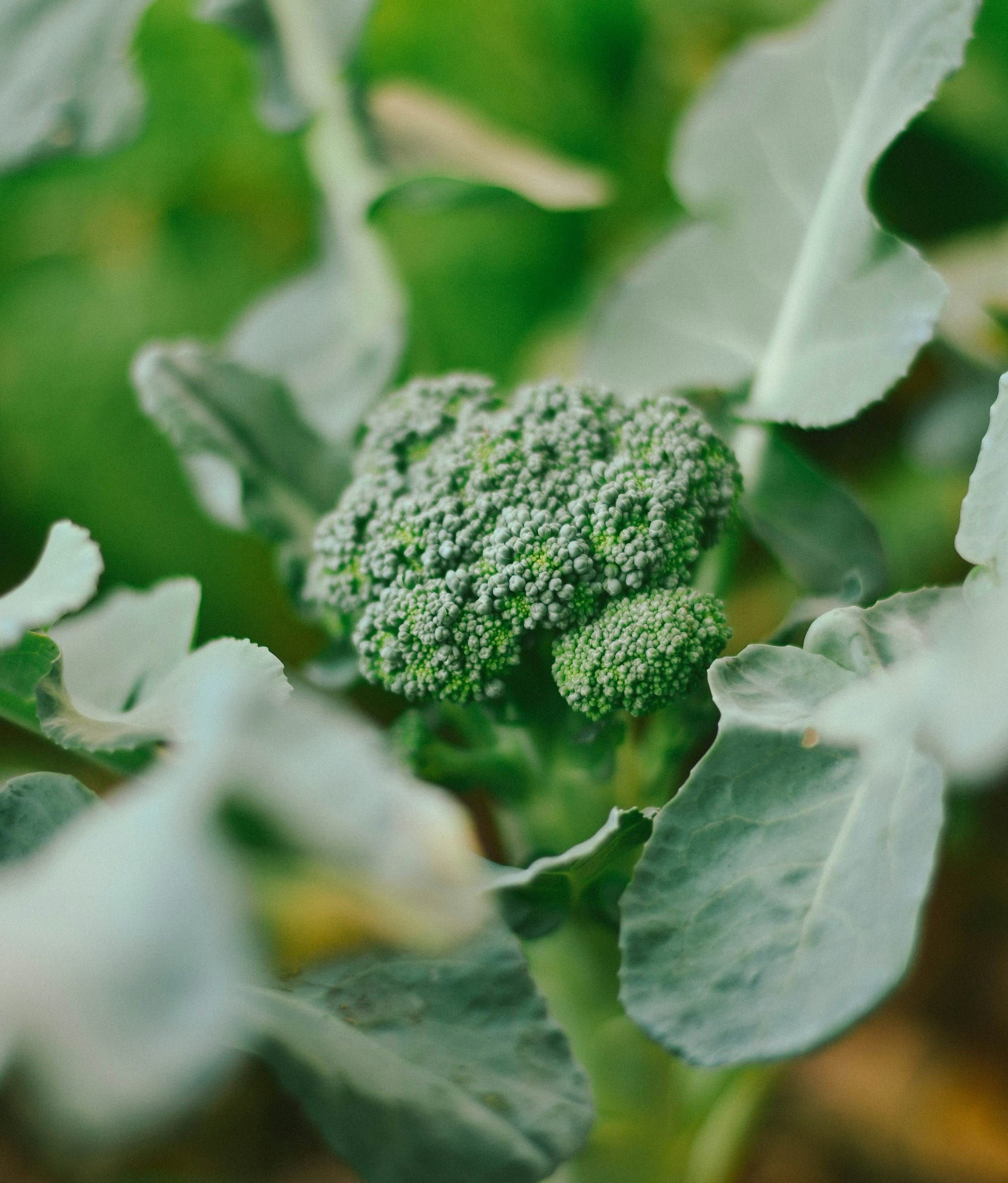
Each type of vegetable in your garden has distinct nutritional needs that vary based on its growth habits and stage of development. Knowing the specific fertilizer requirements will help you harvest a more bountiful and healthy crop.
Leafy Greens and Heavy Feeders
Leafy greens, including lettuce and spinach, thrive with a consistent supply of nitrogen to promote vigorous leaf growth.
As heavy feeders, plants like zucchini, cucumbers, and tomatoes benefit from fertilizers rich in both phosphorus and potassium to support their extensive root systems and robust fruit production.
- Initial Soil Preparation: Work in a balanced 3-4-4 fertilizer before planting.
- Ongoing Nutrition:
- Tomatoes: Use a 3-4-6 fertilizer; additional calcium can prevent blossom-end rot.
- Leafy Greens: Apply nitrogen-rich fertilizer once a month during active growth.
Root Vegetables Care
Root vegetables like carrots need phosphorus for optimal root development. They also need less nitrogen to prevent excessive foliage.

It’s crucial to fertilize moderately to maintain a balance between root growth and leafy top growth.
- Soil Preparation: Prior to planting, use a phosphorus-rich fertilizer.
- Maintenance: Apply a light dose of a high-phosphorus fertilizer if needed during the growth cycle.
Fruit-Bearing Vegetable Needs
Vegetables that bear fruits, such as peppers and tomatoes, require fertilizers that encourage both flowering and fruit production. These should have less nitrogen and more phosphorus and potassium.
- At Planting: Incorporate a 3-4-6 fertilizer into the soil for tomatoes.
- Blossoming & Fruit Development:
- Cucumbers: Fertilize when flowering to boost fruit set.
- Peppers: Use a formulation with lower nitrogen but higher phosphorus and potassium.

To ensure successful application, water your plants thoroughly before and after fertilizing. Also, avoid fertilizing under extreme heat to prevent damage to the plants.
Special Considerations for Fertilizing
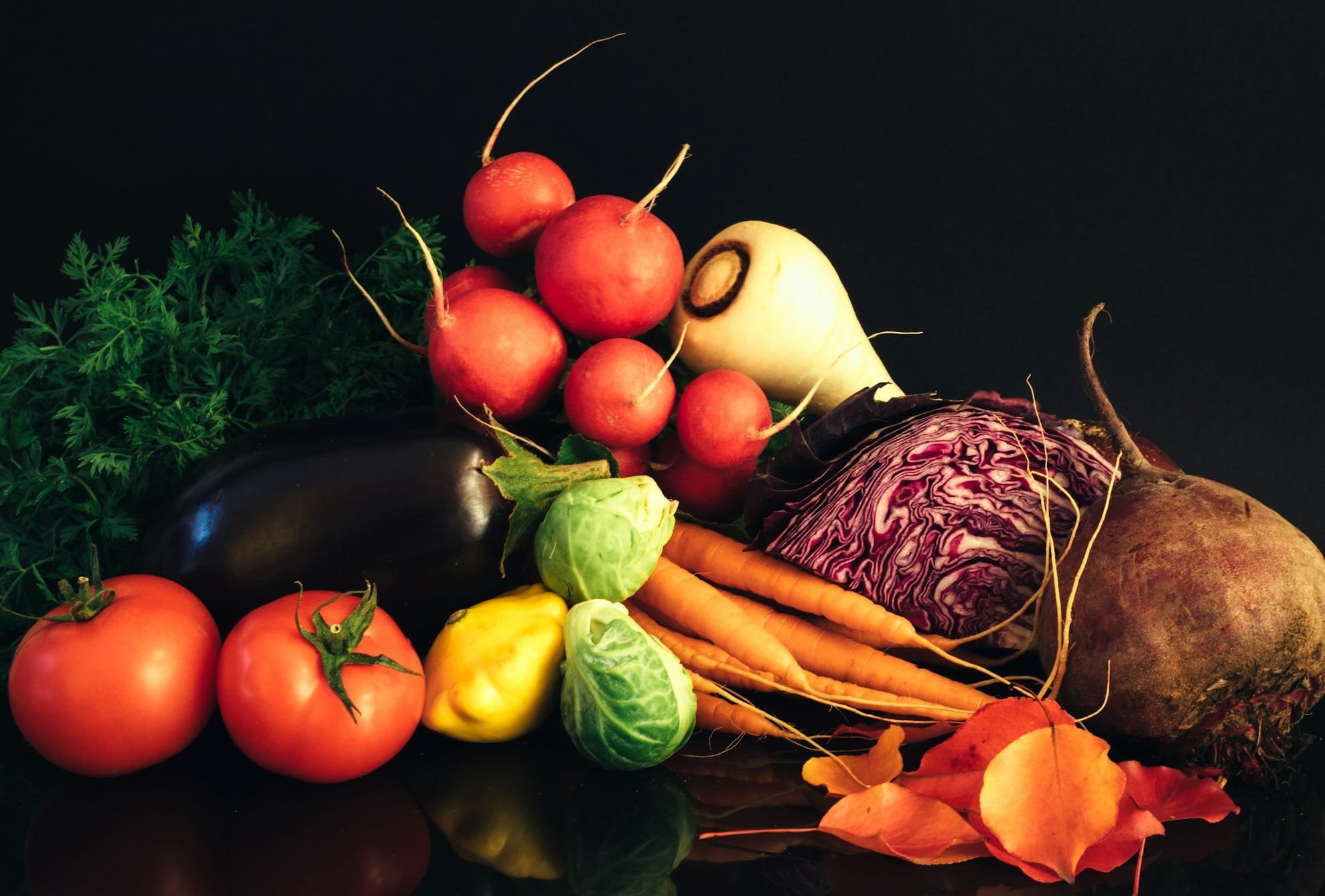
When fertilizing your vegetable garden, it’s crucial to consider environmental factors and planting strategies that influence nutrient availability and plant health. Your approach can significantly impact your garden’s productivity and vitality.
Effect of Rain and Irrigation
Rain fundamentally alters the fertilization dynamics by leaching nutrients away from the soil and plants.
It’s important to monitor rainfall patterns and adjust your fertilizer schedule accordingly to prevent nutrient depletion.
On the other hand, using a watering can allows for controlled irrigation. This can help dissolve and distribute compost tea or other fertilizers evenly without over-saturating the soil.
- After heavy rain, reduce fertilizer application as nutrients may have been washed away.
- In dry conditions, use a watering can to help integrate the fertilizer into the moisture levels of the soil.
Companion Planting and Fertilizer Use
Companion Planting refers to growing specific plants together to harness natural benefits, such as pest control or enhanced nutrient uptake. This strategy can influence fertilizer use.
Some plant combinations can effectively distribute or share nutrients, while others may compete, requiring strategic fertilization.
- Plant nitrogen-fixing legumes near nitrogen-loving plants to reduce the need for additional fertilizer.
- Observe companion plants’ reactions to fertilization to adjust application as needed.
Enhancing Soil Fertility Naturally
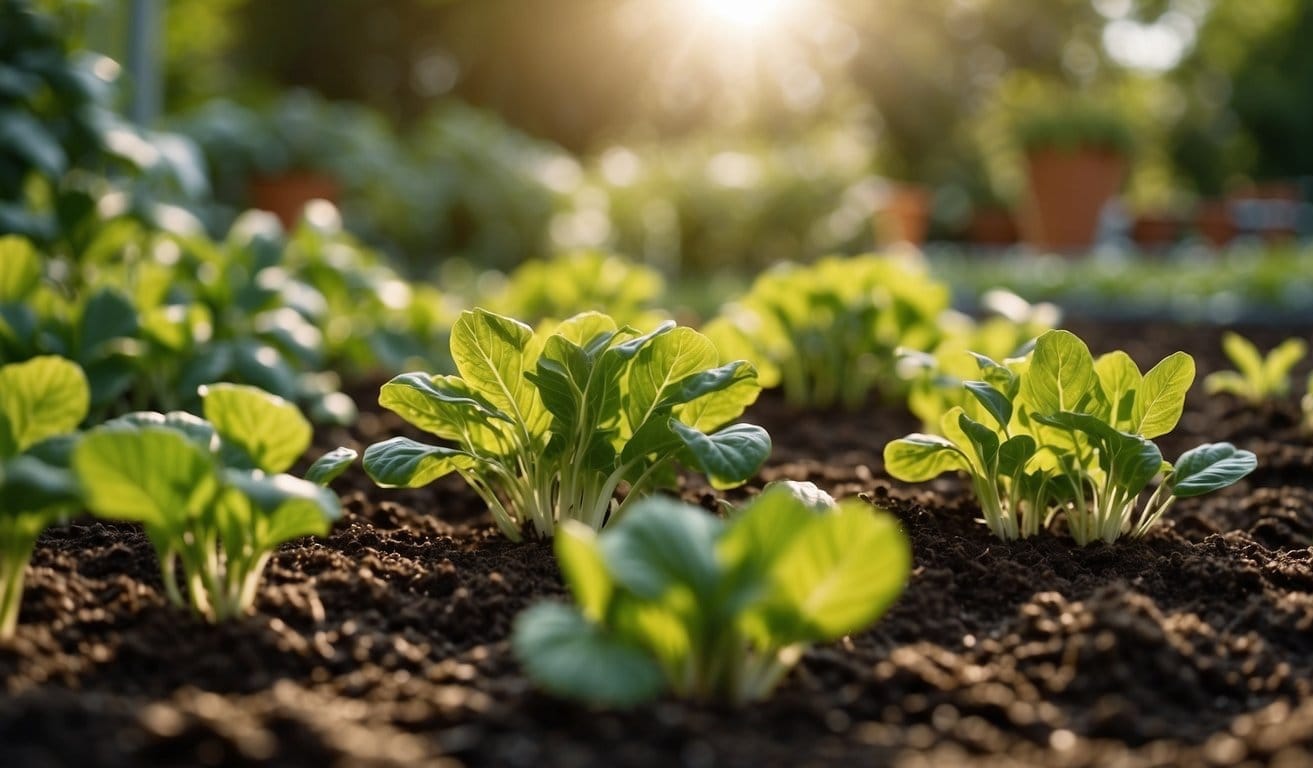
To naturally enhance your garden's soil fertility, incorporating organic matter is key.
Using compost, which is decomposed organic material, provides a wealth of nutrients and improves soil structure. You can make your own compost by recycling kitchen scraps and yard waste, turning waste into valuable food for your plants.

Worm castings are another excellent amendment, offering a concentrated source of essential nutrients. These castings, worm excrement, also improve soil aeration and water retention. Worm bins or vermiculture practices can be established to regularly harvest these natural fertilizers.
Incorporating aged manure into your garden contributes necessary nutrients like nitrogen, phosphorus, and potassium. Ensure it's well-aged or composted to avoid harm to plant roots and to ensure pathogens are destroyed.
Adding a layer of mulch not only retains moisture but also gradually breaks down, slowly releasing nutrients and fostering a favorable environment for beneficial soil organisms. Mulches such as straw, wood chips, or leaf mold also suppress weeds and protect soil from erosion.

Monitoring and maintaining soil health is crucial for plant health. A simple soil test can guide you in understanding what your soil may be lacking and should influence which type of organic matter you choose to add.
| Amendment | Benefits |
|---|---|
| Compost | Nutrients, soil structure |
| Worm Castings | Nutrient-rich, improves aeration |
| Aged Manure | Nitrogen, phosphorus, potassium |
| Mulch | Moisture retention, weed control |
Frequently Asked Questions
What is the optimal frequency for applying fertilizer to a vegetable garden?
Depending on the growth stage and type of vegetables, the frequency may vary. Generally, fertilizing every three to four weeks during the growing season is recommended to maintain nutrient levels.
Which type of organic fertilizer is most effective for growing vegetables?
Organic fertilizers such as compost, manure, or a pre-mixed organic blend with balanced N-P-K values (Nitrogen-Phosphorus-Potassium) are effective. Choose one that complements the specific nutrient needs of your vegetable garden.
How should fertilizer be applied before planting vegetables?
Before planting, incorporate the fertilizer into the top five inches of soil. Then water the soil gently to help distribute the nutrients.
What are the best practices for using homemade fertilizer in a vegetable garden?
Use well-composted materials to ensure they are broken down sufficiently. Apply homemade compost as a top dressing or work it into the soil to avoid the risk of nutrient burn to plants.
How do you properly apply 10-10-10 fertilizer to your vegetable garden?
Spread the 10-10-10 fertilizer evenly over the soil and then mix it into the top layer before planting. Always follow the manufacturer's recommended application rates.
Is it better to water your vegetable garden before or after fertilizing?
Always water your garden before applying granular fertilizers. This will help to avoid burning the roots.
After applying liquid fertilizers, provide water to help carry the nutrients to the root zone.

